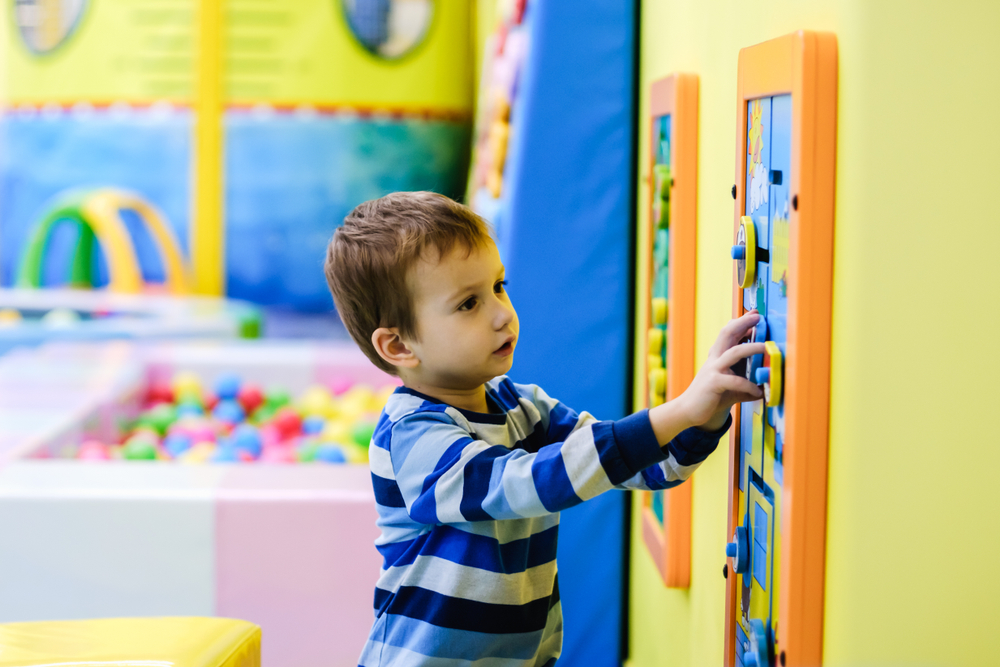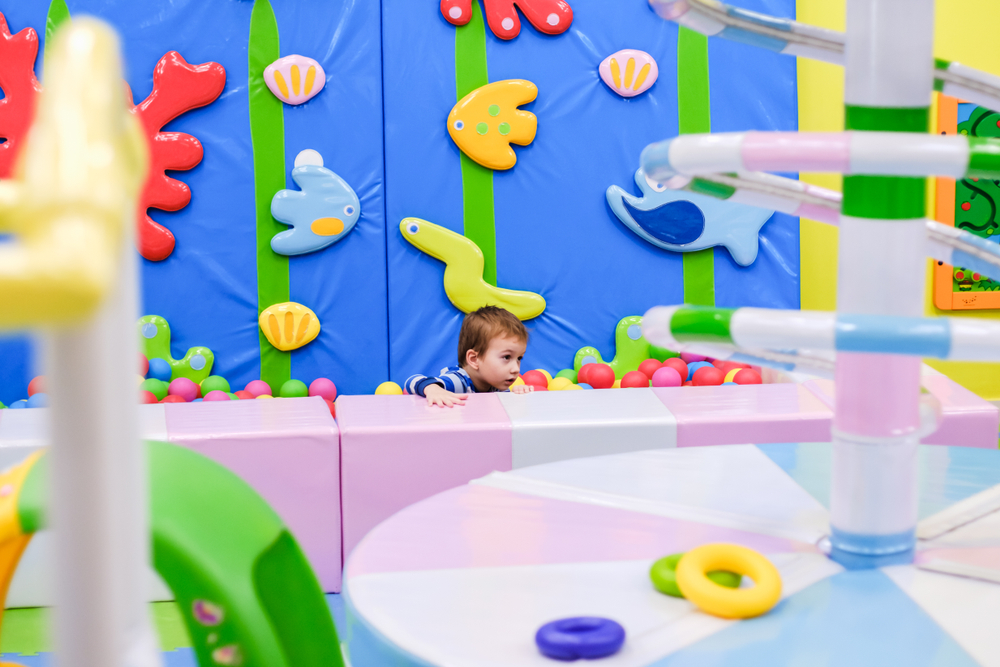Designing play panels that really click with kids can turn a dreary waiting room into a little adventure zone. By matching the panels to how children grow and learn, you give them fun challenges that fit just right so they’re neither bored nor frustrated. When each feature feels made just for them, it eases nerves and sparks curiosity, making clinic visits smoother for everyone. Based on experience, thoughtful fixtures help ease first-visit jitters, build trust in the environment, and even spark conversations between siblings or visiting friends. Over time, these interactive walls become a familiar, comforting sight that transforms anxiety into anticipation.
Choosing the right heights, textures, and puzzles means you’re not just filling wall space. You’re creating moments of joy and mini achievements. Kids get to fiddle, twist, and solve, while parents breathe a sigh of relief knowing their little ones are happily occupied. Smart, playful walls blend learning with distraction, helping little ones feel more at ease. And because the panels are designed with growth in mind, they can evolve alongside each child, offering new tricks and twists with every visit. Ultimately, these engaging installations turn passive waiting into active play.

Why Developmentally Appropriate Design Matters
Getting the design spot-on for different ages means kids can actually use and enjoy the panels. If you ignore where they’re at developmentally, features can end up too tricky or too dull. That mismatch can kill the fun and leave everyone feeling annoyed.
The risk of one-size-fits-all
When you slap on generic fixtures, you risk kids not being able to reach or understand them. That either frustrates toddlers or bores older kids who crave a challenge.
- If knobs sit too high, little ones just get annoyed trying to twist them, while teens roll their eyes and wander off. It turns what should be fun into a struggle.
- Without levels of difficulty, there’s no sense of progression, so repeat visits feel stale as there are no new puzzles to tackle. Children need fresh hurdles to stay engaged.
- Boring walls push kids towards screens or roughhousing, which can create more stress for families and staff. Engaging panels keep hands busy and minds happy.
Mismatched play equipment equals frustration or disinterest
If a panel is too easy, older kids won’t bother; too hard, and little ones will give up. Either way, the magic of play fizzles out. Tailoring matters, or you end up fixing problems instead of sparking smiles.
- Overly complex puzzles can make tiny hands feel helpless, damaging confidence rather than building it. Kids remember that sting of failure more than the fun of trying.
- Simple spin-dials won’t catch the eye of school-agers, so they skip the play and pace around anxiously. Panels should grow with their users, not leave them behind.
- When parents have to constantly help, it’s less “fun discovery” and more “tedious chore.” Independent play frees adults up to focus on appointments and paperwork.
Benefits of tailoring activities
Customised features are the secret sauce for happy kids and chilled carers. When each task feels doable but still a tickle on the brain, everyone wins. You get confident little explorers and relaxed parents.
- Age-rated knobs, sliders, and pegs let children nail the challenge without adult rescue missions. Success here pumps up self-esteem.
- As kids grow, you can swap out panels or tweak settings to keep things fresh. Adjustable setups mean you don’t need a total overhaul every year.
- Free-play zones let siblings or peers of different ages join in side by side, giving each child just the right level of challenge. Shared victories build cooperation.
Key Developmental Areas Supported by Play Panels
Play panels aren’t just pretty walls; they’re mini playgrounds for vital skills. By mixing in tasks for fingers, eyes, brains, and social smarts, you get all-around growth. Clinics that nail these touchpoints help children shine a little brighter.
Fine motor skill development
Small hand movements power big future wins, like writing and buttoning shirts. Panels with twisty knobs, sliders, and clip-ons turn these skills into a fun game.
- Turning chunky wheels works wrist control and hand strength, building the same muscles kids use for pencils. It’s like sneakily training for writing.
- Sliding beads up tracks tests pincer grip, which is crucial for picking up tiny objects. Better grip here equals smoother dressing and snack times.
- Clipping panels together teaches just-right force, so children learn how hard to push or pull without smashing things. It’s all about teaching self-control.
Visual tracking and spatial awareness
Following moving parts with your eyes sets the scene for reading fluency and sports. Panels that sway, spin, or maze through paths give kids plenty of chances to track and judge distance.
- S-shaped sliders make kids watch curves closely, training eyes to follow lines like tracking words on a page. It’s a stealthy reading warm-up.
- Colour-wheel spinners challenge kids to spot patterns, boosting visual discrimination and spatial sense. They get hooked on finding the next hue.
- Bead mazes demand planning routes, so children learn consequences: moving one piece here affects where another ends up. It serves as an ideal preparation for developing map skills and solving puzzles.
Cognitive engagement
Well-chosen puzzles turn play into brain workouts, helping kids piece together logic and sequences. Every lever pulled or button pressed teaches them that actions have reactions.
- Shape-matching boards let children fit blocks into slots, reinforcing geometry basics and hand-eye coordination. Success lifts pride and problem-solving confidence.
- Press-and-reveal stations surprise kids when a hidden picture pops up, teaching them that exploring leads to results. It’s a tiny lesson in curiosity and science.
- Number tracks with pegs let preschoolers count as they play, making early math feel like fun. Kids internalise sequences by actively moving pieces.
Social interaction in shared play spaces
Play panels bring kids together, teaching sharing, teamwork, and conversation. Designing for pairs or groups sparks cooperative play instead of solo boredom.
- Twin panels side by side let siblings or buddies solve mirrored puzzles together, building teamwork and mutual encouragement. It’s like a mini contest or partner project.
- Story-path boards invite two children to take turns choosing what happens next, sparking dialogue and creativity. They practice talking through ideas and listening.
- Alternating button games teach waiting and fairness, critical social skills that translate to playground etiquette. Learning to take turns builds patience.

Practical Considerations for Paediatric Clinics
Putting these panels into real-world clinics means balancing playful thrills with practical needs. You’ve got to think about space, cleanliness, safety, and noise, all without killing the fun. Smart planning nails both vibes and logistics.
Space-efficient wall-mounted designs for busy clinics
Wall panels save floor space, so you don’t end up with cluttered hallways or crammed seating. Fixtures can be zoned at different heights to suit every kid.
- Mount panels at toddler, preschool, and school-age levels to ensure everyone can reach something cool. It’s a vertical buffet of fun.
- Recessed frames and flush mounts eliminate sharp edges or tripping hazards, keeping corridors safe even when little ones get rambunctious.
- Modular setups let you group or spread panels in waiting rooms, exam rooms, or play corners, matching foot traffic and seating layouts.
Hygiene and infection control
Kids love to touch everything, so panels must resist germs and wipe down fast. Smooth plastics and treated metals make daily cleaning a breeze.
- Nonporous materials let staff disinfect high-touch spots in seconds with approved wipes. No nooks for dirt or germs to hide.
- Snap-off covers on handles and knobs allow deep cleaning or quick swaps after spills. These are useful for juice boxes or snacks.
- Antimicrobial surface treatments add backup protection, slowing germ growth between cleanings and boosting peace of mind.
Safety standards and durable materials for healthcare environments
Healthcare settings demand rock-solid, bump-proof fixtures that stay safe under heavy use. Pick impact-resistant, non-toxic materials and lock down parts so they can’t come loose.
- Rounded edges and shatterproof plastics prevent nasty scrapes or broken shards if kids get a bit too enthusiastic.
- Powder-coated steel frames and polycarbonate panels shrug off kicks and knocks, lasting for years without rust or cracks.
- Tamper-proof fasteners stop little hands from dismantling things, cutting, or swallowing, reducing choking risks.
Quiet-play designs for a calm atmosphere
Too much noise can raise anxiety in clinics, so think whisper-quiet mechanics and soft feedback. Panels that click or slide gently keep sounds down.
- Felt-lined sliders and soft-click gears let kids fidget without triggering noise complaints, keeping the mood serene.
- Spinners with built-in dampers hush rotational sounds while still providing tactile fun.
- Matte surfaces absorb taps and drumming, rather than echoing metal-on-metal crashes, helping to preserve a calm soundscape.
Designing play panels that align with children’s growth and clinical needs turns ordinary walls into supportive, engaging spaces. When every twist, slide, and click matches a developmental milestone, kids gain confidence, carers feel at ease, and staff enjoy smoother operations. Well-planned installations combine fun, learning, and practicality, making healthcare visits less stressful and more enjoyable for families.
Investing in age-appropriate, durable, and easy-to-clean fixtures shows you value comfort and development alongside medical care. By considering space constraints, hygiene protocols, and noise levels, you ensure panels shine without causing hiccups in daily routines. Ultimately, these thoughtfully crafted walls transform clinics into places where play and healing go hand in hand, leaving lasting impressions of warmth and care.



